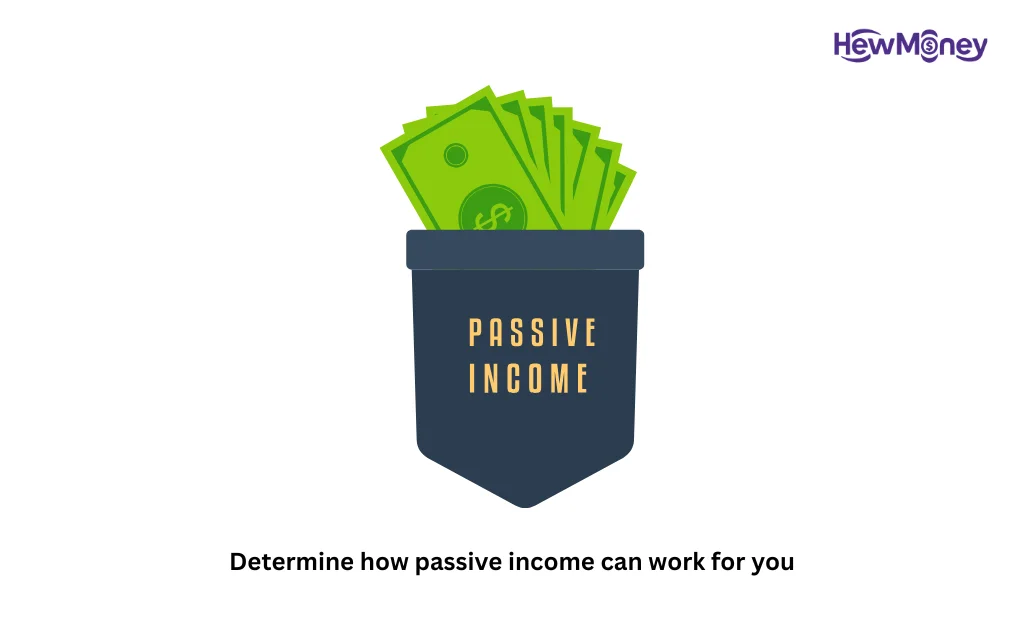Passive income strategies usually take little effort to produce returns, as contrast to normal jobs or investments that could require your active participation.
Although generating passive income might seem simple, these tactics are not risk-free or effective. Many demand upfront financial and time commitments.
An Ameriprise financial advisor will assist you in figuring out how these tactics could increase your income and suit your financial objectives, time horizon, and risk tolerance.
Take a look at these five passive income strategies. As you weigh your alternatives, keep in mind that it is a good idea to diversify your investment portfolio using a variety of tactics and to take potential tax implications into account:

1. Cash equivalents and deposits
Short-term cash investments provide a return on the principal that has been deposited or invested. These investments are a desirable source of passive income because they require little to no work. However, because of their relatively reduced risk, they may not be as successful as other methods, and their returns are usually dependent on the prevailing interest rate environment.
You can make a return on your money while still having easy access to it with certain cash vehicles, such as high-interest checking or savings accounts and sweep accounts. Because of this characteristic, they may be advantageous accounts for long-term investments, transactional uses like bill payment and shopping, or emergency fund savings.
Here are few instances:
- Sweep account: Provides a moderate amount of interest in exchange for keeping balances easily available and regularly moves a portion of your money into a higher-interest account.
- Checking or savings accounts with greater interest rates than the industry norm are known as high-interest accounts.
- Certificates of deposit are high-interest deposits that, when left for a predetermined period of time (such as six months, a year, or five years), usually yield a greater fixed return.
- Treasury notes, sometimes known as T-bills, are a type of short-term, government-backed debt that matures in less than a year.
2. Bonds

You can lend money to a business, town, the US government, or a governmental organization in place of purchasing stock in a corporation. In exchange, the issuer commits to paying you a certain interest rate during the bond’s term and returning the principle, or face value, at maturity. Bonds have a set maturity and interest payments, and they are generally less volatile than equities. They are subject to hazards such interest rate risk, credit risk, and prepayment risk, but they also often yield a lesser return than equities.
- U.S. Treasury bonds: These bonds, which are used to finance some of the government’s expenditures, are backed by the full faith and credit of the United States.
- Corporate bonds: To finance operations or expansions, businesses may take out loans from bond investors.
- Municipal bonds: To raise money for projects, state and local governments issue municipal bonds.
3. Dividend stocks
Some businesses pay dividends to their shareholders, which are a percentage of their profits. Depending on the company’s net income and dividend policy, you can get quarterly payments when you buy stocks from these companies.
Because they do not have a set maturity, dividend-paying stocks carry a significantly higher market price risk and may yield more or less than bonds. Remember that a business may decide to reduce or stop paying dividends at any time, which would lower your passive income.
4. Real estate investment trusts (REITs)

It can need a lot of hands-on involvement to purchase and manage real estate. You can invest in substantial income-producing real estate through real estate investment trusts. They might be a fantastic choice if you want to take advantage of the money that real estate can bring in while also lessening the stress that comes with it.
Because they may enable you to receive a portion of the revenue generated by commercial buildings without actually buying the real estate, REITs stand out as one of the best options for passive income investing. The unpredictability of the real estate market and the possibility that certain distributions would be taxed as ordinary income are two possible drawbacks of REITs. There are two types of REITs: non-traded REITs with more stringent liquidity requirements and publicly traded REITs that purchase and sell on an exchange like stocks.
5. Rental property
Another excellent passive income investment choice is purchasing short- and long-term rental real estate, which has the potential to yield large returns. However, it frequently necessitates more effort and financial outlay than alternative tactics, encompassing building upkeep and repairs, property taxes, and tenants.
You can think about renting expensive things you currently own if you would prefer to start modest while making rental revenue. People can now rent out their cars, equipment, and other tangible assets (including parking spaces) through peer-to-peer rental platforms. Boats, RVs, camera equipment, and power tools are just a few examples of the products that consumers contract out. If you ever want to sell your rental property, you will want to factor in the wear and tear on your property, the wasted time handling the leasing process, and any potential tax ramifications.
Determine how passive income can work for you

You may supplement your retirement income and make additional money while working with passive income options, but you should speak with an expert to determine what is best for your particular circumstances. You may learn more about these tactics and decide which ones work best for your entire financial plan with the assistance of an Ameriprise financial advisor.

